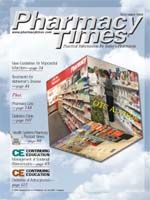Publication
Article
Pharmacy Times
"Smart" Pump Technology
Over the past decade,various technologieshave been introducedto reduce the numberof medication errorsassociated with the medication-useprocess. Computerized prescriber orderentry has been adopted to aid thephysician in appropriate prescribing.Robots and automated dispensingmachines have been utilized to helppharmacists in the dispensing of medications.Finally, point-of-care technologyhas been introduced to ensure thatthe right patient gets the right medicationat the right time.
All of these technologies are essentialand very helpful in enhancingpatient safety, but they are ineffectiveat reducing intravenous (IV)-administrationmedication errors, which aresome of the most costly and dangerous.Point-of-care technology willensure that the nurse selects the correctIV medication to give to the correctpatient, but it will not assist in theprogramming of the IV pump. Thenurse still has to perform this step, anderrors can result.
Some of the errors that can occur arecalculation errors. The nurse is responsiblefor taking a physician's order andconverting it to a flow rate. For example,the physician may prescribe a drugto be given in mcg/kg/min, but thepump can deliver only in mL/hr. To beable to give this drug, the nurse has toknow the concentration of the drugand the weight of the patient. Thenurse will then need to calculate byhand how to program the pump.
Other errors that could be introducedare programming errors. Forinstance, the nurse may want to givean insulin infusion of 4.5 units perhour. If the concentration is 1 unit/1mL, the rate would be 4.5 mL/hr. If thenurse hits the decimal point and itdoes not register, the patient couldmistakenly receive 45 units per hour,as opposed to 4.5 units per hour.
In both of these situations, the nursemay never know that the pump wasprogrammed incorrectly until thepatient has an untoward response.Also, these scenarios still can occureven in an institution that has implementedmany of the technologiesmentioned above.
To prevent IV-administration medicationerrors, vendors are beginning tointroduce pump technology utilizingdecision-support software. A drug librarywill be completed by the institution andwill be imbedded as a safety tool intothese pumps. These drug libraries willhave a listing of the drug name, the standardizedconcentration used at that institution,and an appropriate dosing rangefor that drug. This list also can be updatedas new prescribing information isknown or drugs are changed on the formulary.The pumps will store usageinformation that can be downloaded toprovide quality assurance data todemonstrate the value of the technology.
If a physician prescribes dopamine tobe infused at 15 mcg/kg/min, these"smart" pumps will greatly decrease thechance for IV-administration errors. Toprovide the infusion to the patient, thenurse would select dopamine from thedrug library. The drug concentrationand infusion parameters would automaticallyappear if the data had beenpreloaded into the software. The nursewould need only to enter the dose thephysician prescribed and the patientweight. The pump would make the calculationfrom mcg/kg/min to mL/hr,reducing the chance of the nurse makinga calculation error.
The drug software also would have anappropriate infusion range built into it. Ifthe nurse entered an infusion rate thatexceeded the predetermined limit, thepump would alert the nurse and eithernot allow the infusion to proceed (hardstop) or make the nurse confirm that thisrate was what was wanted (soft stop). Ifthe nurse typed in 155 mcg/kg/min, asopposed to 15 mcg/kg/min, fordopamine, the drug library would alertthe nurse that this rate is inappropriateand stop the infusion from starting. Thusthis technology is useful in preventingprogramming errors.
"Smart" pump technology recentlyhas been added to the marketplace toprovide another layer in minimizingmedication errors. It assists in reducingIV-medication errors?some of themost dangerous and costly of errors?by providing the nurse with a tool tohelp in the calculation and programmingof IV medications.

Newsletter
Stay informed on drug updates, treatment guidelines, and pharmacy practice trends—subscribe to Pharmacy Times for weekly clinical insights.






